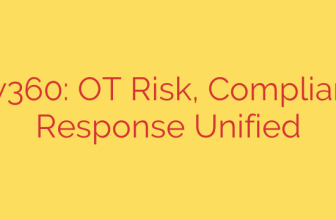
Avnet Confirms Major Data Breach: Is the Stolen Data Truly Secure?
Global electronics giant Avnet has officially confirmed it was the target of a significant cyberattack, resulting in the theft of sensitive company data. While the company has acknowledged the breach, it maintains that the exfiltrated information is unusable by the attackers. This incident serves as a critical reminder of the persistent and sophisticated threats facing even the largest corporations today.
The hacking group SiegedSec has claimed responsibility for the attack, asserting they successfully stole a massive trove of data. The group alleges the stolen files include employee records, account information, corporate communications, and other confidential technical data.
Here’s a breakdown of what we know about the Avnet security incident and what it means for enterprise cybersecurity.
The Core of the Incident
In a public statement, Avnet acknowledged that a third party gained unauthorized access to some of its IT systems. The company moved quickly to contain the threat and launch a formal investigation with the help of external cybersecurity experts and law enforcement.
The most crucial part of Avnet’s response is its claim regarding the stolen data. According to the company, its security protocols ensured the data was protected. Avnet stated that the compromised information is unreadable, suggesting that robust encryption or other security measures rendered it useless to the hackers.
However, the threat actors have a different story. The SiegedSec group claims to have successfully exfiltrated terabytes of sensitive files and has threatened to leak the information publicly. This stark contrast between the company’s statement and the hackers’ claims creates uncertainty about the true impact of the breach.
Analyzing the “Unreadable Data” Claim
When a company claims stolen data is “unreadable,” it typically means the files were encrypted. Data encryption is a fundamental security practice that scrambles information, making it inaccessible without the correct decryption key.
There are two primary scenarios to consider:
- The Data Was Encrypted at Rest: This is the best-case scenario. If Avnet’s servers had strong, full-disk or file-level encryption, the hackers may have only stolen scrambled, nonsensical data.
- The Data Was Stolen Before a Ransomware Attack: In many modern attacks, hackers first infiltrate a network, steal unencrypted copies of valuable data, and then deploy ransomware to encrypt the original files. If this happened, Avnet’s claim might be misleading, as the copied data would be fully readable.
It is crucial for organizations to understand that hackers often target data in its most vulnerable state. While encryption is a powerful defense, it is not foolproof. Cybersecurity experts often caution against taking corporate statements at face value until a full, independent investigation is complete. The ambiguity of the term “unreadable” leaves room for interpretation, and the true risk may not be known for some time.
A Wake-Up Call for Supply Chain Security
Avnet is not just an electronics company; it is a central hub in the global technology supply chain. A breach of this magnitude has potential ripple effects, impacting the thousands of partners, suppliers, and customers who rely on Avnet’s services.
This incident highlights the critical vulnerability of global supply chains to cyberattacks. A successful attack on a major distributor can expose sensitive information belonging to countless other businesses, creating a cascading security crisis. It underscores the importance of thorough third-party risk management and ensuring that all partners in your supply chain adhere to strict security standards.
Actionable Security Measures to Protect Your Business
The Avnet data breach is a powerful case study for businesses of all sizes. To defend against similar threats, organizations must adopt a proactive and layered security posture. Here are essential steps every company should take:
- Implement Robust Encryption: Ensure all sensitive data is encrypted, both at rest (on servers and drives) and in transit (as it moves across the network). This is your last line of defense if an attacker bypasses your other security controls.
- Develop a Comprehensive Incident Response Plan: Don’t wait for a breach to figure out what to do. A well-documented incident response plan allows your team to act quickly to contain threats, mitigate damage, and communicate effectively.
- Strengthen Access Controls: Enforce the principle of least privilege, ensuring employees only have access to the data and systems absolutely necessary for their jobs. Implement multi-factor authentication (MFA) across all critical applications.
- Conduct Regular Security Audits and Penetration Testing: Proactively identify and remediate vulnerabilities in your network. Regular testing simulates a real-world attack and reveals weak spots before criminals can exploit them.
- Prioritize Continuous Employee Training: Your employees are your first line of defense. Ongoing training on phishing, social engineering, and secure data handling practices can prevent many attacks from ever succeeding.
Ultimately, the Avnet incident is a stark reminder that no organization is immune to cyber threats. While the full impact remains to be seen, the lessons are clear: proactive defense, layered security, and a readiness to respond are non-negotiable in today’s digital world.
Source: https://www.bleepingcomputer.com/news/security/electronics-giant-avnet-confirms-breach-says-stolen-data-unreadable/








